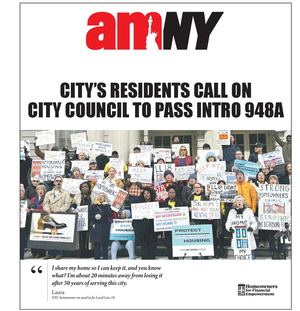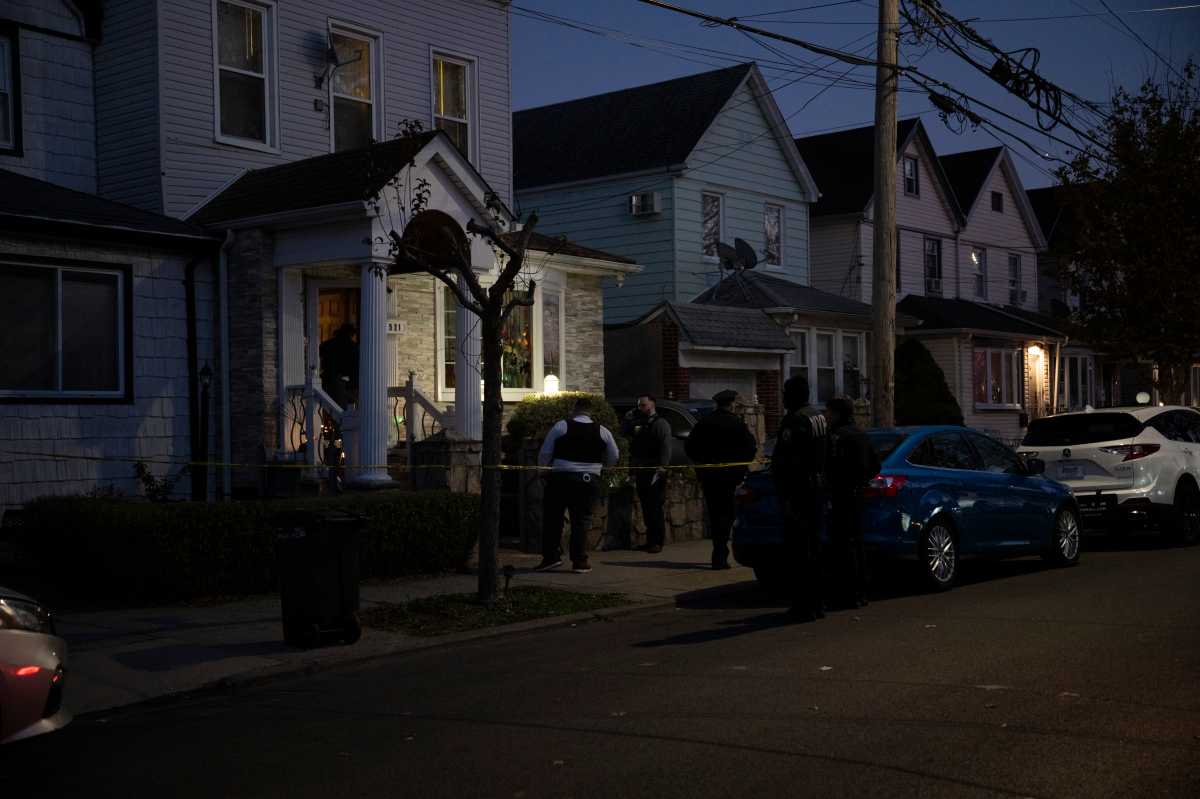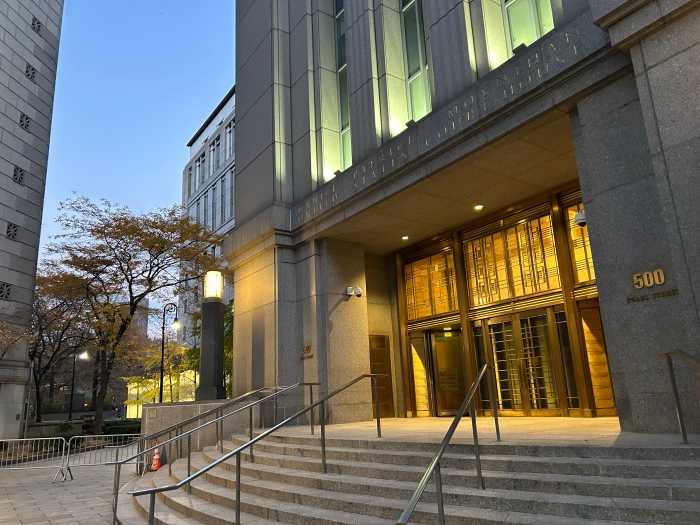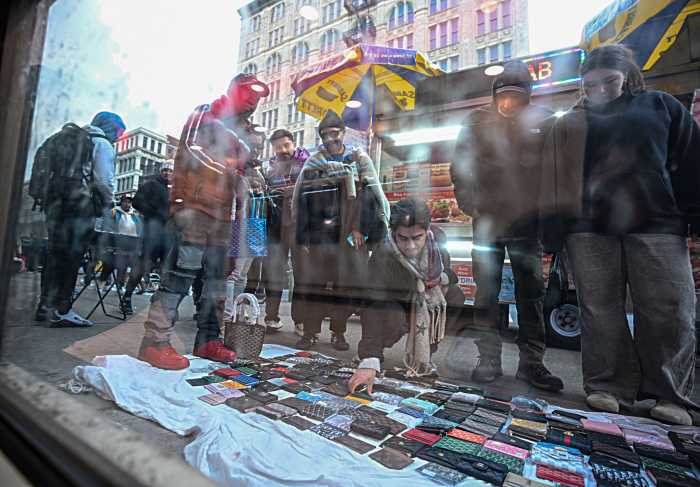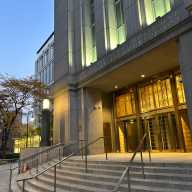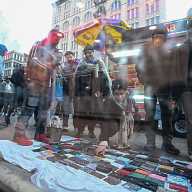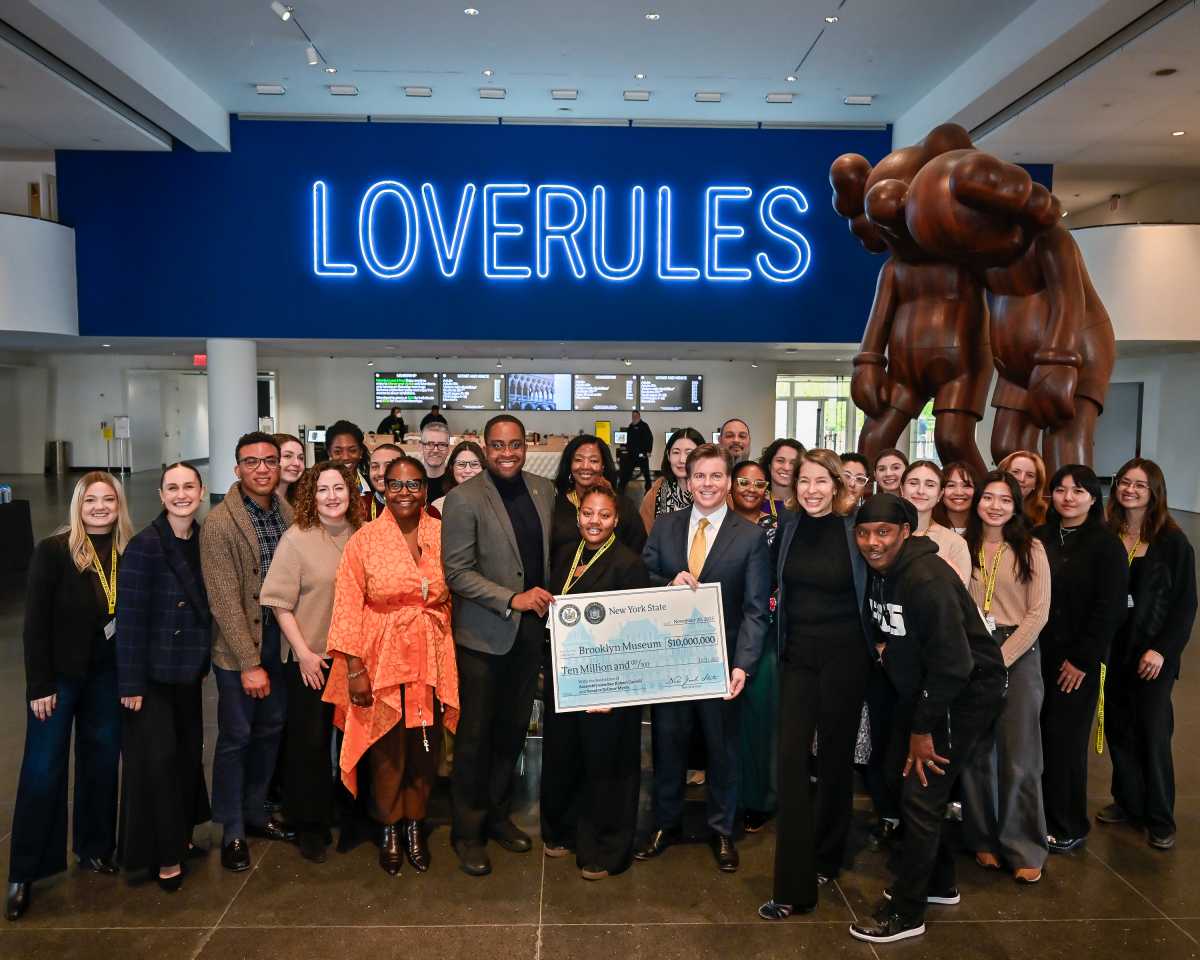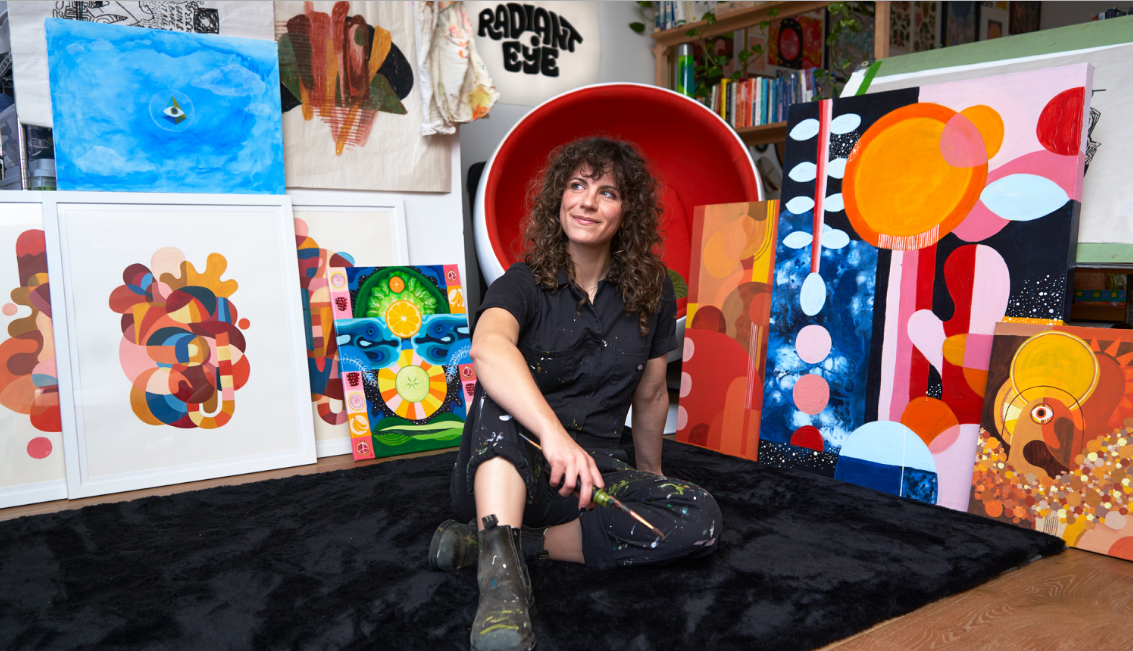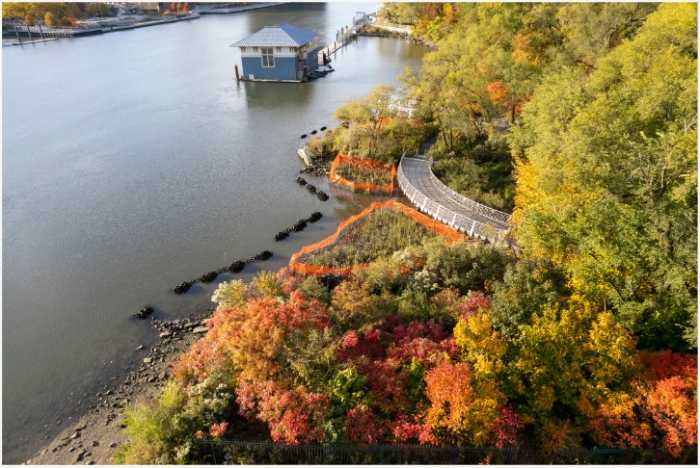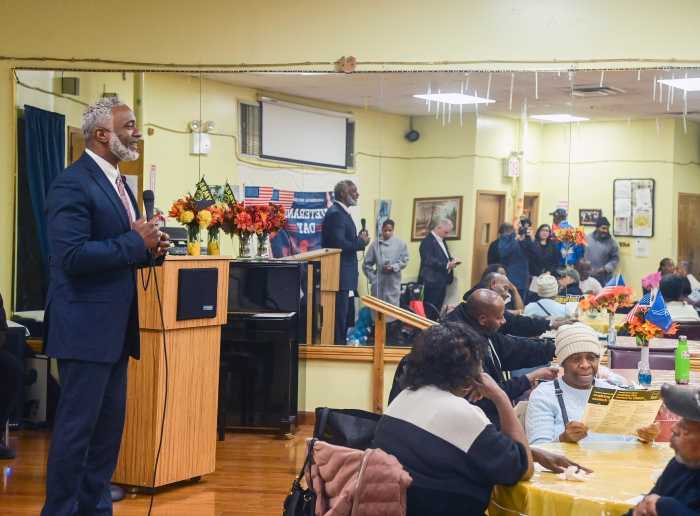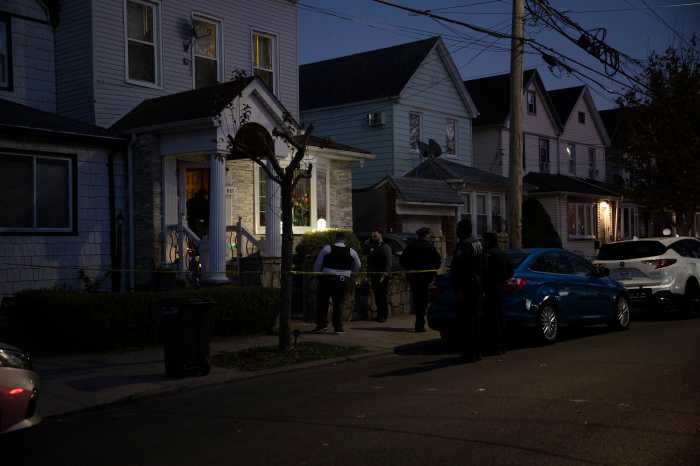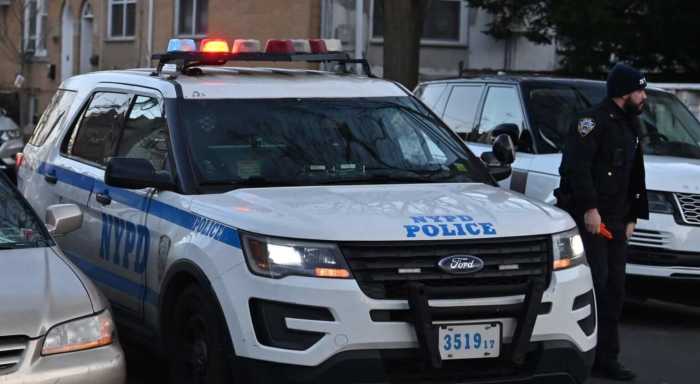
Conservator John Saunders is never sure what he will find when he gets to the top of the Washington Square Arch, where even a blanket of tight netting can’t stop the persistent New York City pigeon.
“One managed to get in through a little hole and build a nest,” Saunders said, standing in the shadow of the majestic arch. “Their guano combined with seeds from the park causes grass to grow up there. Once there was even a sapling tree on the ledge.”
But Saunders takes it in stride. With a small team of staffers and enthusiastic summer interns, the Parks Department’s Citywide Monuments Conservation Program works on more than 500 sites a year.
That includes everything from removing graffiti to hot wax treatments that are used to repair pedestals and restore bronze.
Crews also check for any cracks or weaknesses in the works of art that have spent decades and sometimes even centuries exposed to the elements.
“These are historical touchstones, and works of beauty and social meaning that help perpetuate our memory of people, places, events and values of significance to our society and its evolution,” said Jonathan Kuhn, director of Art & Antiquities for the city Parks Department, who oversees the monument conservation program.
“They help define our public spaces, contribute to tourism and serve as focal points for public life.”
The program started about 20 years ago when decades of neglect and tight budgets left too many of these public treasures in sad shape.
Kuhn said some of the pieces were even stored for safekeeping.
“A bronze statue with no protective finish will corrode in acid rain and from other pollutants, which may cause streaking that undermines the “legibility” of the artwork or monument,” he said. “Stonework and masonry that is not periodically cleaned and repointed will be vulnerable to carbon deposits, biological growth (algae and the like) and water penetration that can physically destabilize the monument.”
The program is funded with private dollars — a combination of donations, endowments and other sources. The staff includes some city workers.
In recent weeks, the team of conservators worked on the statue of William Cullen Bryant in his eponymous park in midtown Manhattan, the Gay Liberation sculpture in Greenwich Village and other sites throughout the city.
The Washington Square Arch, a towering marble structure that reaches more than 70 feet high, was due for an annual cleaning and inspection when Saunders and a crew visited it last week.
They power washed away surface dirt and applied a biocide to prevent any more grass from growing.
“Moss is bad for the stone,” he said. “It ages the stone.”
Using a rubber mallet, they checked for any loose pieces of marble.
College students and interns Elena Mars and Odette Blaisdell, who are studying conservation, were thrilled to help clean the iconic structure.
Mars said at one point they walked through a staircase within the arch to reach certain parts of the structure.
“You are inside history — this is a part nobody gets to see,” said Mars, a student at New Mexico State University.
The two learned to handle blow torches and power washers while perched in a cherry picker.
“It’s a very strange and very cool experience,” said Blaisdell, a Rhode Island School of Design student from Morningside Heights. “You’re sitting there washing George Washington’s face, feeling close to a figure in history even though it’s just stone.”
Saunders said local residents are usually happy to see the crew at work.
“Many of the monuments are war memorials,” he said. “For some people in the neighborhood, they have a grandfather or someone remembered. They have a connection to it.”
